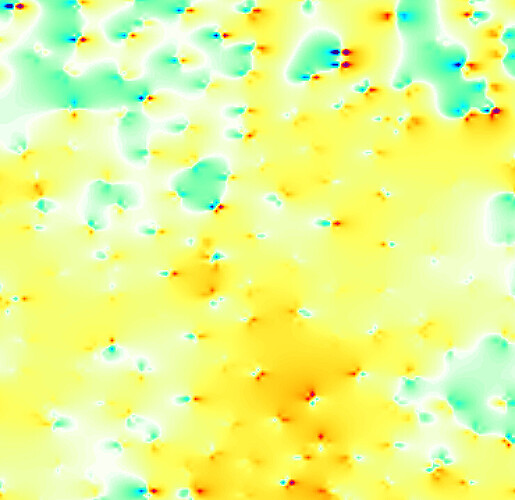Hi all,
I searched the forum to check whether the question has been posted before. I couldn’t see any mention of this, and I hope I am not mistakenly asking it a second time.
Sys specs
GMT version 6.4.0 installed on Mac arm64 Darwin Kernel Version 22.2.0
Problem
I calculated the strain-rate field with gpsgridder and grdmath; to do that I studied the scripts in the topex site CGM_V1 directory. When I plot the dilatation field, at the GNSS station coordinates, there are singularities -as if the greens functions are over-fitting at those locations. I checked the velocity grids, and when I zoom in, I cans those singularities in there too. Example dilatation rate screenshot is attached.
What I tried
-
I tried to fudge the solution by both the default value and larger values. But this didn’t solve the doublets of very large and small values.
-
I varied the Poisson’s ratio, but the pattern didn’t improve.
-
I fixed the velocity uncertainties to very large values, to see if the solutions would vary -they didn’t.
-
I played with the number or ratio of eigenvalues to retain, there wasn’t any improvement. The command line below represents my final trial.
gmt gpsgridder data.lluv -R26/45/36/42 -I2m -Cn95 -W -fg -Ggps_%s.nc -V -Ff0.01
gmt grdgradient gps_u.nc -Gvxx.grd -A270 -fg -V
gmt grdgradient gps_u.nc -Gvxy.grd -A180 -fg -V
gmt grdgradient gps_v.nc -Gvyx.grd -A270 -fg -V
gmt grdgradient gps_v.nc -Gvyy.grd -A180 -fg -Vgmt grdmath vxx.grd 1000. DIV 1.e9 MUL = exx.grd
gmt grdmath vyy.grd 1000. DIV 1.e9 MUL = eyy.grd
gmt grdmath vxy.grd vyx.grd ADD 2000. DIV 1.e9 MUL = exy.grdgmt grdmath exx.grd eyy.grd ADD 2 DIV = dilatation.grd
Question
Does anyone have suggestions to remove those singularities?
Best Regards,
Ali
